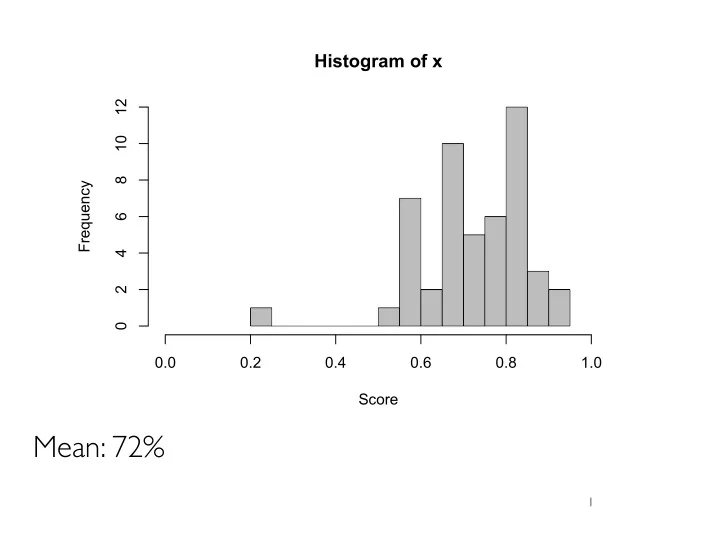

Histogram of x 12 10 8 Frequency 6 4 2 0 0.0 0.2 0.4 0.6 0.8 1.0 Score Mean: 72% 1
Flying Reptiles of the Mesozoic
Bird Evolution Summary • Birds are theropod dinosaurs, demonstrated by similarities in osteology, oology, integument, and behavior • Feathers and arm flapping evolved before the animals were capable of powered flight • Flight likely first evolved in paravian theropods (not in birds), but they were poor fliers • Further acquisition of flight adaptations (pygostyle, sternum, alula) occurred during Mesozoic bird evolution • Flying pterosaur reptiles are not related to birds but display convergent evolution of many flight adaptations
Pterosauria Earliest vertebrates known to evolve powered flight!
Pterosauria 10 in 23 ft 33 ft 13 ft Quetzalcoatlus
6
Pterosauria: early forms Late Triassic - Late Jurassic Eudimorphodon : (sea gull sized) Already and advanced flyer Short body Elongate 4th finger Pteroid bone
Pterosauria Dinosauria Crocodylomorpha “Rauisuchia” Ornithosuchidae Ornithodira Crurotarsi Crown-clade Archosauria Basal archosaurs Archosauria
Pterosauria Aves Scleromochlus Pterosauria Lagosuchus Dinosauria Ornithodira: Upright gait S-curved necks 9 Hinged Ankle
Pterosaur Traits Elongate 4th finger Pteroid Hollow limb bones Stiff torso Enlarged brain 3 membranes: First Cranial Crests Arm Tail Breastbone with Keel 10
Pterosaur Traits: pneumatic bones 11
Pterosaur Traits: air sacs 12
Pterosaur Traits: cranial crests Keratinous Pteranodon Dsungaripterus
14
Pterosaur Traits: cranial crests Nyctosaurus ; late Cretaceous Sometime, ridiculous things happen.
Pterosaur Traits: jaw diversity Dorygnathus Scaphognathus Sordes Basal Pterosaurs (paraphyletic) Late Triassic Campylongnathoides Long teeth and nails Most lacked bony crests Ramphorynchids
Dimorphodon 17
Ctenochasma Pterodaustro 18 Fisheaters, Filterers Ornithocheirus
Pterosaur Traits: jaw diversity Pteranodon No teeth Scoop-shaped bill One of the best known large Pterosaurs Sexually Dimorphic crests Heavily fused body to protect against flight-related stress Potentially more Glider-like (Wing shape similar to Albatross)~ dynamic soaring Piscivore
20
Pterosaur Traits: skin Covered in hair-like filaments: Pycnofibres NOT HAIR Similar in structure: convergent evolution Very convincing evidence that these animals were endothermic
Sordes pilosus “Hairy Demon”
Pterosaur Eggs Thin, soft shelled eggs No evidence of multiple laminar layers 23
Pterosaur Flight
high aspect ratio (long, slender) low aspect ratio (short, squat) Frigate Bird 25
Convergent Flight Adaptations in Pterosaurs
Pectoral Girdle Similarities Pterosaurs independently evolved a pectoral girdle for supporting flight muscles Pterosaur pectoral girdle Avian pectoral girdle Strut-like coracoid Short, stout bones fused to humerus (arm sternum bone) Large fused sternum with keel
No feathers – instead use skin membrane stretched across hand Wing surface primarily supported by extended finger digit IV Pteroid bone – unique to pterosaurs Bird alula Bird wing: feathers Wing surface primarily supported by ulna, wrist
29
Unique Flight Adaptations in Pterosaurs Wing support Outer wing supported by Actinofibrils 3 distinct layers of criss-crossed fibers Keratin? Elastin? Unknown. Oxygenated by looping blood vessels 35
Tension Actinofibrils : Arranged perpendicularly to lines of highest tension in wing 36
Alternative Wing Structures Wing structure highly variable in modern animals Almost certainly was variable among Pterosaurs There is likely no ‘One right answer’ here 37
Pterosaur Walking An evolving concept... A) 1970s: Belly dragging B) 1980s: Bipedality C) 1990: Semi-erect D) 1990s: Sprawling Still a source of contention!
Pterosaur Walking Top: Pteraichnus Bottom: Running Caiman A B 39
Tail Vanes Present among early Pterosaurs; particularly Ramphorynchus Much reduced among derived Pterosaurs Probably a stabilizing feature More diamond-shaped among older animals
Unique Flight Adaptations in Pterosaurs Laser Beam eyes Convergently evolved in Kryptonian humanoids
Giant Flying Animals Largest pterosaur ( Quetzalcoatlus , from the latest Cretaceous) had a 12 m wingspan and weighed 100 kg Largest bird ( Argentavis , Miocene) had 7 m wingspan and weighed 80 kg
Giant Pterosaurs Largest pterosaurs were probably excellent gliders but would have had difficult reaching takeoff velocity
Pterosaur documentary 10:13 44
45
Recommend
More recommend